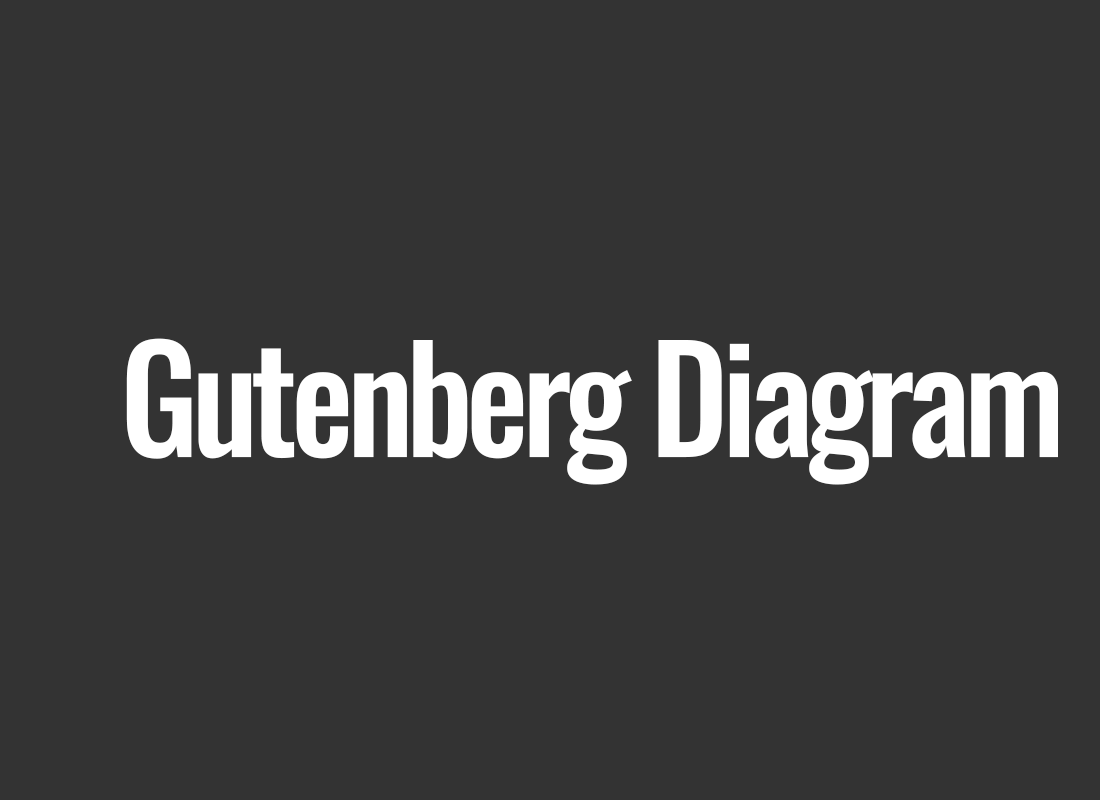Gutenberg Diagram
The Gutenberg Diagram is one of the key concepts in interface design, and its name hints at its roots in the field that revolutionized information dissemination - printing. The name is not coincidental, as it refers to how people naturally scan content on websites and other information media. With the development of technology and the increasing importance of user experience (UX) in design, the Gutenberg Diagram has become a crucial tool for interface designers, aiming to optimize the way users absorb information.
The Gutenberg Diagram is not just a theory but a practical tool that allows designers to understand how users' gaze moves across a webpage. This model is based on natural scanning habits, making it incredibly useful in creating interfaces that effectively capture attention and ensure intuitive user experiences. In this article, we will take a closer look at the definition of the Gutenberg Diagram, understanding its fundamentals, and the benefits of its practical application.
The Gutenberg Diagram is not just a theoretical concept - it is the key to optimizing information presentation, which is particularly important in areas such as e-commerce, UX design, or content marketing. By delving into the principles of this model, designers can create interfaces that are not only aesthetically pleasing but also effectively convey intended messages, increasing user engagement.
Optimized Design with the Gutenberg Diagram
In today's digital environment, where information bombards users at every turn, understanding how people scan content becomes a crucial aspect of interface design. The Gutenberg Diagram, based on natural eye movements, is a tool that enables designers to optimize information presentation to focus users' attention on key elements of the page.
The Gutenberg Diagram Principle in Practice
The fundamental element of the Gutenberg Diagram is its division into four areas: the scanning area, the tracking area, the taking part area, and the rejection area. In the initial phase, users scan the upper part of the page, where headers and first impressions are located. They then move to the tracking area, which includes the vertical sections on the left side, where content is typically placed. This is where users spend most of their time, gradually absorbing information. The taking part area is where they focus their attention on specific content, while the rejection area is the part of the page they usually skip.
Interface designers, considering these areas, can deliberately place key information to easily catch the users' field of view. This allows directing users' gaze to elements crucial for the project's goals, whether they are related to sales, information, or marketing.
Gutenberg Diagram in the E-commerce World
In the context of e-commerce, applying the Gutenberg Diagram can be crucial for increasing conversions. Let's consider an example of an online store where key elements such as promotions, product descriptions, or purchase buttons are placed in the taking part area. Users, naturally scanning content, quickly encounter this essential information, increasing their readiness to make a purchase decision. As a result, conversions can increase, and the shopping experience becomes more efficient and satisfying.
Gutenberg Diagram in UX Design
In the field of UX design, the application of the Gutenberg Diagram becomes a crucial tool in creating interfaces that are both aesthetic and intuitive. When designing mobile applications or websites, designers can place important features in the taking part area, providing users with easy access to key elements. Moreover, understanding that users naturally scan pages in a specific way allows adapting the interface layout to their expectations, resulting in increased readability and ease of navigation.
Gutenberg Diagram in Content Marketing
In the realm of content marketing, the Gutenberg Diagram can be used to perfectly tailor presented messages to how people absorb information. For example, the scanning area can be used to attract the attention of new audiences by placing essential information or graphics in the upper part of the page. The tracking area, on the other hand, can be used to gradually introduce more detailed content, increasing audience engagement. As a result, marketing campaigns become more effective, and messages reach users in a more thoughtful and efficient manner.
Summary
In conclusion, it's worth emphasizing that the Gutenberg Diagram is not just a theory but a practical tool that has a significant impact on the effectiveness of UX, e-commerce, and marketing projects. Understanding how people scan content allows designers to better adapt interfaces to users' natural habits. By consciously using the Gutenberg Diagram, designers can not only increase the efficiency of interfaces but also enhance user satisfaction and generate better business results. In the context of the dynamic development of technology and evolving preferences of online users, it can be predicted that the Gutenberg Diagram concept will continue to be developed and adapted to new challenges and opportunities. Designing according to the principles of this model becomes an integral element of modern business strategies, shaping the future of user interactions in the digital world.




